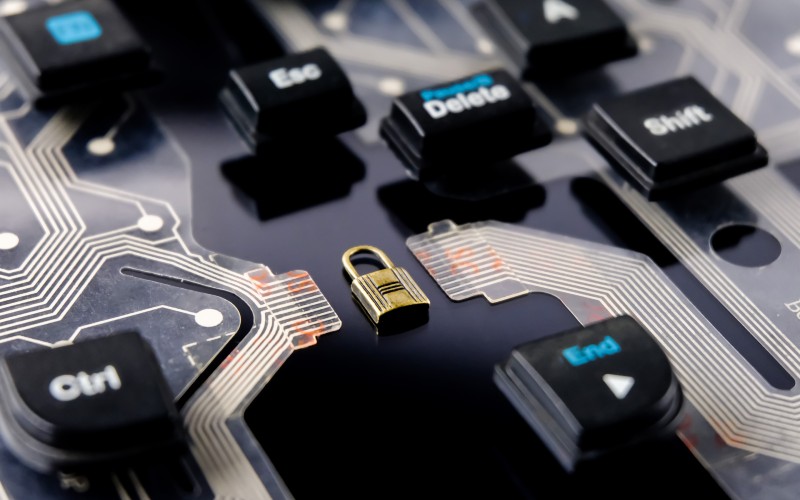Business security has evolved significantly, integrating cutting-edge technologies to tackle on-site and online threats. One of the most transformative technologies in this space is cybersecurity driven by generative AI, which helps detect and mitigate threats in real-time. Companies are also prioritizing cloud security to safeguard data and applications hosted on remote servers, ensuring robust protection against breaches.
Advancements such as smart surveillance systems and biometric access controls are becoming standard. These technologies offer increased accuracy and convenience, making it easier to secure premises effectively.
Enhancing physical security not only protects assets but also reassures stakeholders of your commitment to comprehensive security. Your security strategy should be holistic, encompassing digital and physical layers to address new and emerging threats.
Developing a Robust Security Strategy
Cybersecurity is crucial for protecting sensitive data, maintaining customer trust, and adhering to regulatory requirements. Implementing robust security controls like encryption, identity, and access management, network segmentation, and intrusion detection systems is essential.
Cybersecurity protects against malware, phishing, and data breaches, which can damage your business’s reputation and financial standing. Staying updated with the latest cybersecurity trends, such as the rise in generative AI, helps you prepare for emerging threats.
Physical Security Technologies
Physical security remains a key component of your overall strategy. Advanced technologies like biometric access control, video surveillance, and intrusion alarms enhance protection. These systems monitor and control who enters your facilities, ensuring that unauthorized access is promptly addressed.
Security technologies, such as remote monitoring and automated systems, allow for real-time responses to incidents. By leveraging these technologies, you minimize the risk of physical breaches that can compromise sensitive information and assets.
Integrating Physical and Cybersecurity
Effective security convergence requires integrating your physical and cybersecurity measures. This holistic approach ensures that all vulnerabilities are addressed comprehensively. Collaboration between your IT and physical security teams is crucial in this effort.
For businesses, such integration improves incident response and overall risk management. The good news is that you don’t have to do everything yourself or from scratch — plenty of pentesting companies in the UK provide a wide suite of services, from strategic guidance and consulting to in-depth breach simulations, as well as guidance on how to integrate physical security with your digital defenses.
Innovative On-Site and Online Protection Methods
Advanced detection and response tools are pivotal in identifying and mitigating threats quickly. Leveraging artificial intelligence (AI) and machine learning, these solutions can detect unusual patterns and behaviors in real time.
This includes sophisticated ransomware detection mechanisms that analyze network traffic and user behavior to spot malicious activities before they escalate. In addition, systems like live security camera surveillance enhance physical security by providing real-time monitoring and instant alerts for any suspicious movements in on-site locations.
Encryption and Data Protection
Encryption and data protection are essential to securing sensitive business information. Modern encryption techniques ensure that data, whether at rest or in transit, remains inaccessible to unauthorized users.
Strong encryption protocols can safeguard against data breaches and ensure compliance with regulations.
Authentication and Access Control Systems
Authentication and access control systems are vital for protecting on-site and online resources. Multi-factor authentication (MFA) adds an extra layer of security by requiring multiple verification forms before access is granted.
Biometrics, such as fingerprint or facial recognition, enhance security further by ensuring that only authorized individuals can access sensitive areas. Access control systems regulate who can enter and exit specific premises, improving physical security.
Combining these systems with live guard surveillance and alert mechanisms can significantly reduce unauthorized access risks. Implement robust authentication protocols and comprehensive access management plans to ensure your business remains secure.
Cutting-Edge Technologies in Business Security
Artificial intelligence and machine learning algorithms have become crucial in enhancing business security. These technologies enable systems to learn from data, detect patterns, and identify anomalies.
AI-powered threat detection can effectively monitor and respond to potential threats in real time. Automated responses to security breaches can minimize damage and improve overall system resilience.
Example Applications:
- Automated threat detection
- Predictive analytics for potential security breaches
- Enhanced video surveillance with AI-driven pattern recognition
IoT and Smart Technology Applications
The Internet of Things (IoT) and smart technologies are being increasingly integrated into business security infrastructures. IoT devices such as smart cameras, sensors, and access controls provide comprehensive monitoring and management capabilities.
These technologies allow real-time data collection and analysis, enhancing situational awareness and responsiveness. Smart technology applications can include automated access control systems, remote monitoring, and predictive maintenance to prevent equipment failures.
Example Applications:
- Smart cameras with facial recognition
- IoT-enabled access control systems
- Real-time environmental monitoring sensors
The Role of Cloud Services in Security
Cloud security measures include data encryption, access controls, and continuous monitoring to protect sensitive information. Utilizing cloud services allows for secure data storage and remote access, contributing to business continuity and disaster recovery. Cloud platforms also enable seamless integration with other security technologies, enhancing overall security posture.
Example Applications:
- Cloud storage with encrypted data
- Remote access management systems
- Continuous security monitoring and threat detection
Scaling Security Solutions to Match Business Growth
As businesses expand, scaling security measures becomes critical. This involves addressing the security needs of remote work and overcoming challenges that arise with growth.
Security Technologies for Remote Work
Remote work introduces unique security challenges, requiring robust technologies to mitigate risks. Virtual Private Networks (VPNs) and Zero Trust Architecture ensure secure access to company resources from any location. Multi-factor authentication (MFA) adds a layer of security by requiring multiple verification forms.
Endpoint protection is essential for securing devices used outside the corporate network. Advanced Endpoint Detection and Response (EDR) tools monitor and respond to threats in real time. Implementing cloud security solutions protects data across various platforms and services, particularly as cloud adoption increases.
Security awareness training for remote employees is also crucial. Regular education on recognizing phishing attempts and following best practices can significantly reduce cyberattacks.
Challenges and Solutions in Scaling Security
Scaling security presents several hurdles, including limited resources and increasing complexity. One challenge is maintaining complete visibility over growing IT environments. Asset discovery tools are vital for identifying and managing all devices and systems within the network.
Building or outsourcing a skilled security team helps address the broadening attack surface. Expertise in various areas allows for comprehensive threat management and response. As your business grows, investing in advanced detection and response technologies ensures quicker and more effective handling of incidents.
Time and planning are necessary for scaling security. Developing a clear strategy that aligns with your business goals ensures the appropriate allocation of resources. Regularly updating and reviewing security policies and procedures keeps your business prepared for evolving threats.
Conclusion
Business security today requires a multi-faceted approach. Embracing both on-site and online security technologies is essential.
On-site security should incorporate advanced measures like biometric access controls and AI-powered surveillance systems. These technologies help safeguard physical assets and ensure that only authorized personnel can access sensitive areas.
For online security, deploying robust cybersecurity measures is crucial. This includes firewalls, encryption, and real-time threat detection systems. Machine learning and AI can enhance these defenses by predicting and mitigating cyber threats faster than traditional methods.
Monitoring and regularly updating security policies can greatly enhance your security posture. Review and adjust these policies to address emerging threats and technological advancements.
By adopting these strategies, you can better protect your business from the diverse threats it faces today.


